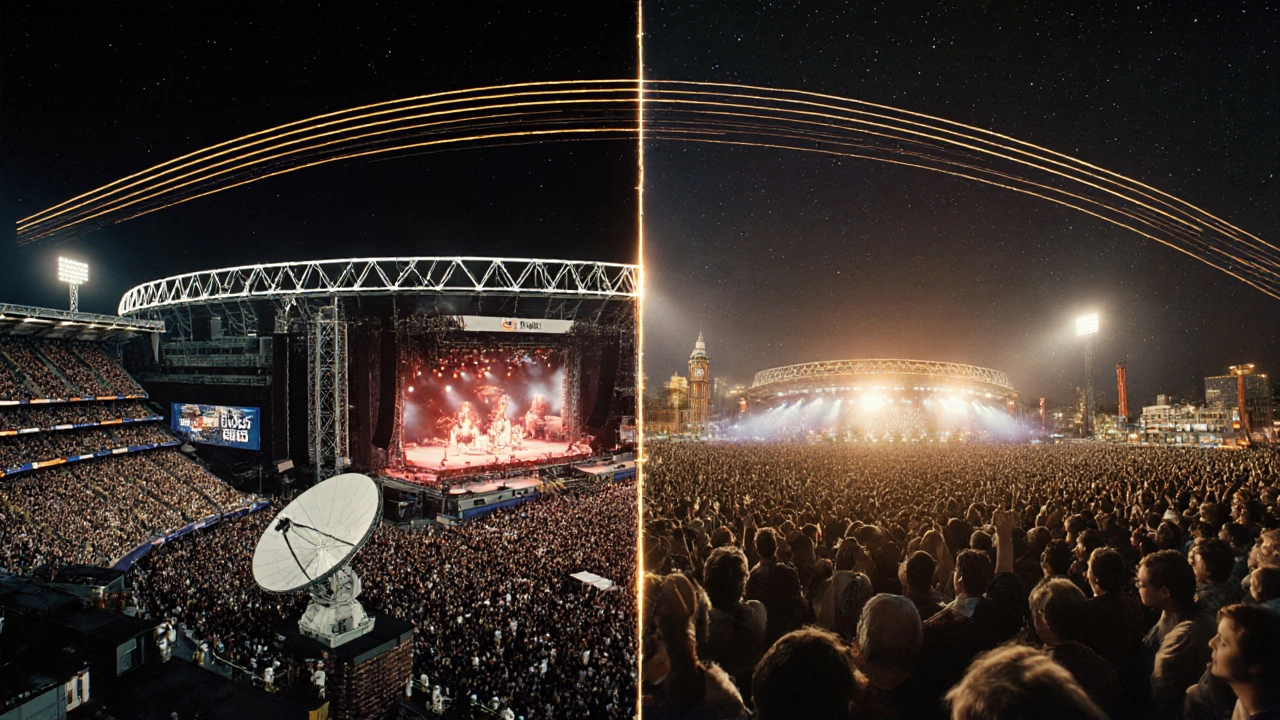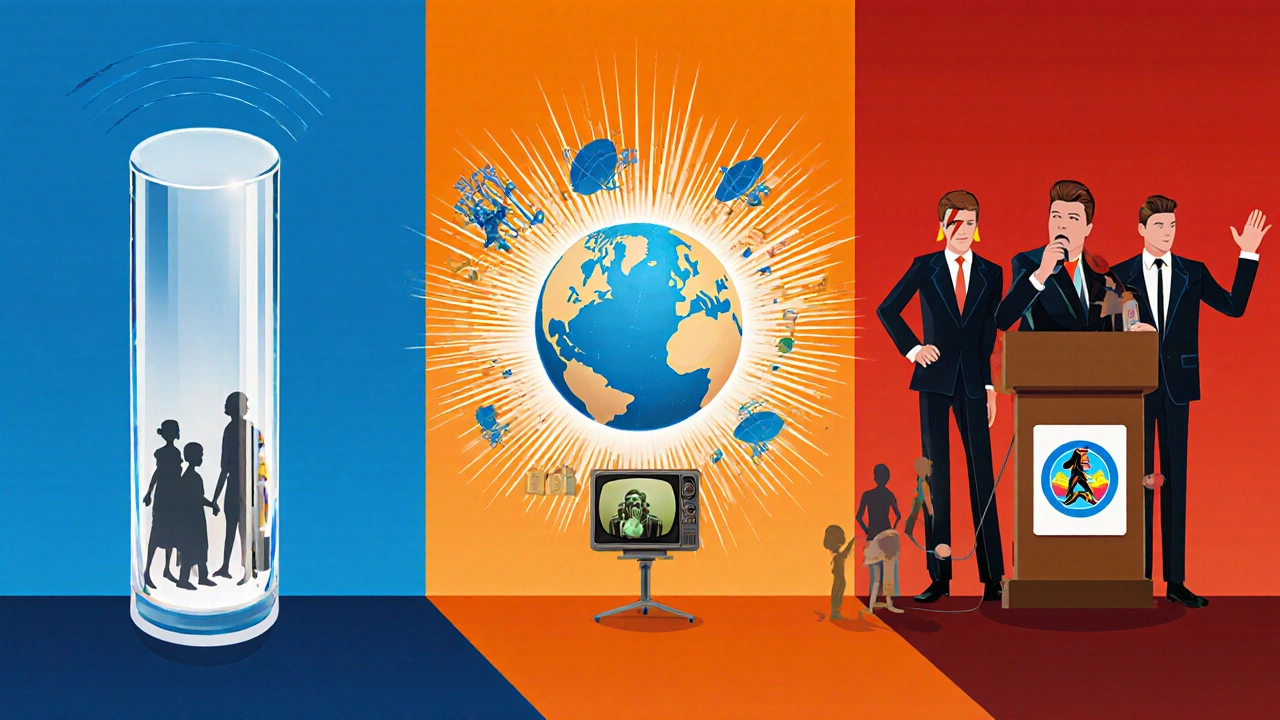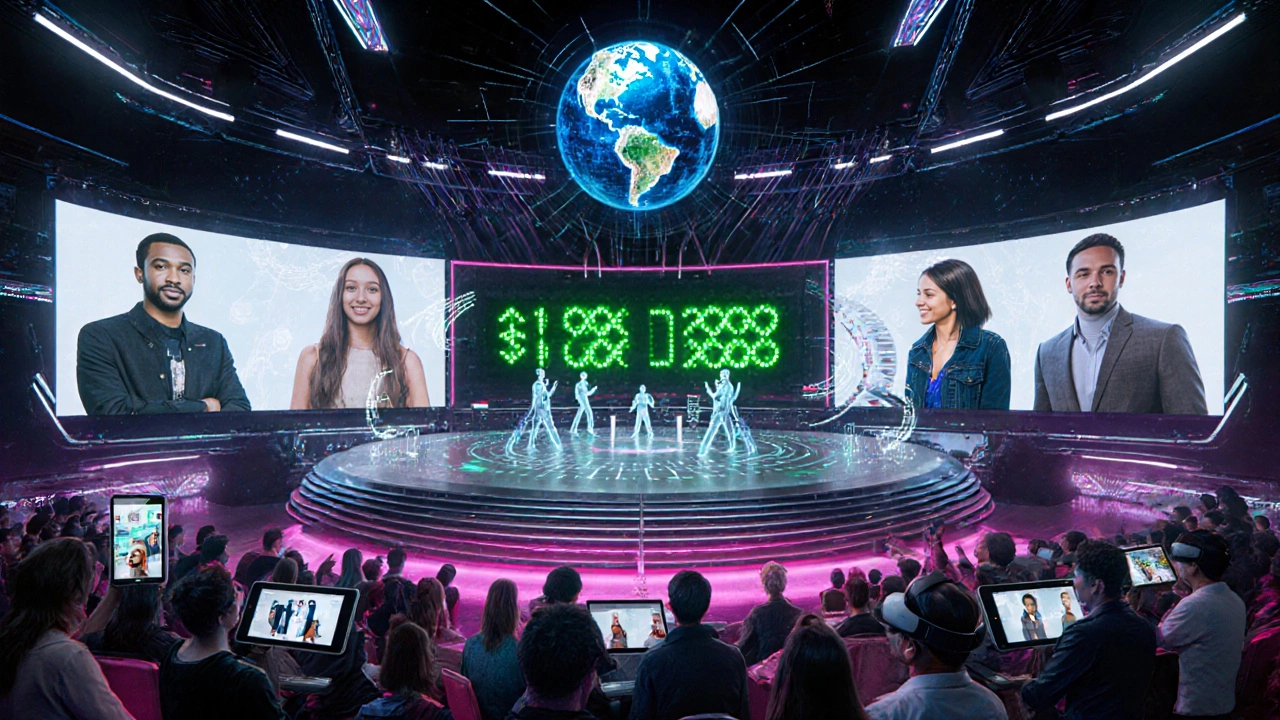The Record-Breaking Fundraiser: How Live Aid Became the Most Successful Ever
 Oct, 12 2025
Oct, 12 2025
Fundraising Efficiency Calculator
Measure Your Fundraising Impact
Compare your campaign's efficiency to Live Aid's historic record. Learn how to optimize your fundraising strategy.
Key Takeaways
- Live Aid (1985) is widely regarded as the most successful fundraiser in history, raising about $150million for Ethiopian famine relief.
- The concert’s power came from global live‑broadcast, star‑studded line‑ups, and a clear, urgent cause.
- When you adjust for inflation, Live Aid still ranks among the top three fundraisers alongside the 2020 COVID‑19 GoFundMe campaign and UNICEF’s 2021 vaccine‑equity fund.
- Key lessons: simple mission, massive media reach, and genuine celebrity involvement.
- Use the comparison table and checklist below to design a fundraiser that can compete on a world stage.
Did you know a single concert in July1985 raised enough cash to feed over ten million people? That event was Live Aid, a dual‑venue concert broadcast to an estimated 1.9billion viewers worldwide. It set a fundraising benchmark that still haunts organizers today. Below we break down why it holds that title, how the numbers look against newer campaigns, and what you can steal for your own cause.
What Defines a “Successful” Fundraiser?
Success isn’t just about the dollar amount. It’s a mix of:
- Funds raised - the raw cash that reaches the cause.
- Impact reach - how many people the campaign touched, both donors and beneficiaries.
- Cost efficiency - the ratio of money spent on promotion versus money delivered.
- Legacy - lasting changes in how future fundraisers are run.
Live Aid ticks every box: colossal revenue, massive global viewership, a modest production budget relative to the donation total, and a cultural ripple that still informs charity concerts today.
Live Aid: The Record‑Holder in Detail
When Bob Geldof and Midge Ure launched Band Aid in 1984, they raised £150,000 for famine relief in Ethiopia. The following year, they amplified the idea into Live Aid, a dual concert at Wembley Stadium (London) and JFK Stadium (Philadelphia) that was broadcast live across 150+ TV networks.
Key metrics:
- Amount raised: ~US$150million (≈£90million) in 1985 dollars.
- Viewership: 1.9billion people worldwide, covering six continents.
- Artists: Over 70 performers, including Queen, U2, David Bowie, and The Who.
- Production cost: Roughly US$2million, a fraction of the funds collected.
The money was funneled through the UNICEF emergency program, which distributed food, medical aid, and water to the most affected regions of the Ethiopian famine.

Why Live Aid Worked So Well
Three pillars held the whole thing together:
1. A crystal‑clear, urgent mission
Famine headlines were omnipresent in the mid‑80s. By tying the concert directly to “saving lives in Ethiopia,” donors knew exactly where their money went.
2. Global, real‑time broadcast
Satellite TV was still a novelty, so seeing live performances from two continents created a shared, electric experience. The urgency of a live event pushed viewers to act immediately.
3. Celebrity credibility
Stars weren’t just performers; they became activists. When Queen’s Freddie Mercury declared, “If you could, could you please stay, little boy?,” it turned a song into a call‑to‑action.
Combined, these elements turned a night of music into a worldwide donation sprint.
How the Numbers Stack Up Today
Since 1985, a handful of campaigns have eclipsed Live Aid in raw dollars, but few match its efficiency or cultural imprint.
| Fundraiser | Year | Cause | Amount Raised (US$) | Primary Channel |
|---|---|---|---|---|
| Live Aid | 1985 | Ethiopian famine relief | ~$150million | Live global TV broadcast |
| GoFundMe COVID‑19 Relief | 2020 | Global pandemic assistance | $500million+ | Online crowdfunding platform |
| UNICEF Vaccine‑Equity Fund | 2021 | Vaccines for low‑income countries | $6.6billion | International donor pledges |
If we adjust Live Aid’s $150million to 2025 dollars (about 2.5× inflation), it equals roughly $375million-still behind the GoFundMe surge but far ahead of most single‑event concerts.
What sets Live Aid apart isn’t the final number; it’s the cost‑to‑impact ratio. The GoFundMe campaign raised more, but it also incurred platform fees (about 5% of total). Live Aid’s production cost was under 2% of money raised.
Copying Live Aid’s Magic: A Practical Checklist
If you want to design a fundraiser that could rival a world‑record, follow these steps:
- Define a single, urgent cause. Vague missions dilute donations.
- Secure a media hook. Whether it’s a live stream, a viral challenge, or a televised special, make the event feel immediate.
- Recruit authentic ambassadors. Celebrities help, but credibility matters more than fame.
- Keep production lean. Stretch every dollar toward the cause, not overhead.
- Show real‑time impact. Live counters, donor shout‑outs, and post‑event reports build trust.
- Leverage global distribution. Partner with broadcasters, streaming platforms, or social‑media giants to reach beyond your local base.
Remember the COVID‑19 pandemic taught us that urgency can be manufactured-but authenticity can’t be faked. Audiences quickly sniff out “feel‑good” fluff.

Common Pitfalls and How to Avoid Them
- Overcomplicating the appeal. Too many sub‑causes split donor attention.
- Relying solely on one platform. Diversify across TV, streaming, and social channels.
- Neglecting donor stewardship. Follow‑up emails and impact stories turn one‑time donors into lifelong supporters.
- Ignoring cost transparency. Show exactly where each dollar goes; donors love numbers.
Wrap‑Up: The Legacy of the Most Successful Fundraiser
Live Aid’s record still stands because it hit the perfect storm: an urgent humanitarian crisis, a revolutionary broadcast technology, and a galaxy of music icons who cared enough to act. Modern fundraisers can learn from its formula, even if they use TikTok instead of satellite TV.
Whether you’re planning a community bake‑sale or a global concert, the core lesson is simple: a clear mission, massive reach, and genuine champions turn good intentions into historic results.
Frequently Asked Questions
What amount did Live Aid actually raise?
Live Aid collected roughly US$150million (about £90million) in 1985, which funded emergency food, medical aid, and water projects for the Ethiopian famine.
How does Live Aid compare to the GoFundMe COVID‑19 campaign?
GoFundMe’s COVID‑19 relief raised over $500million, but it incurred platform fees and was spread across many small campaigns. Live Aid’s single‑event model achieved a higher cost‑to‑impact ratio and a larger cultural footprint.
Can a small community event ever rival Live Aid’s success?
While matching Live Aid’s dollars is unlikely for a local event, applying its principles-clear mission, media partnership, and transparent impact-can dramatically boost donations relative to size.
Why did Live Aid’s broadcast reach so many viewers?
In 1985 satellite television was a novelty, and networks across six continents paid for the rights to air a live, high‑energy concert. The blend of music and humanitarian appeal made it “must‑watch” TV.
What are the biggest lessons for modern fundraisers?
Keep the cause simple, use a platform that can reach a global audience, involve credible ambassadors, minimize overhead, and show donors real‑time impact.